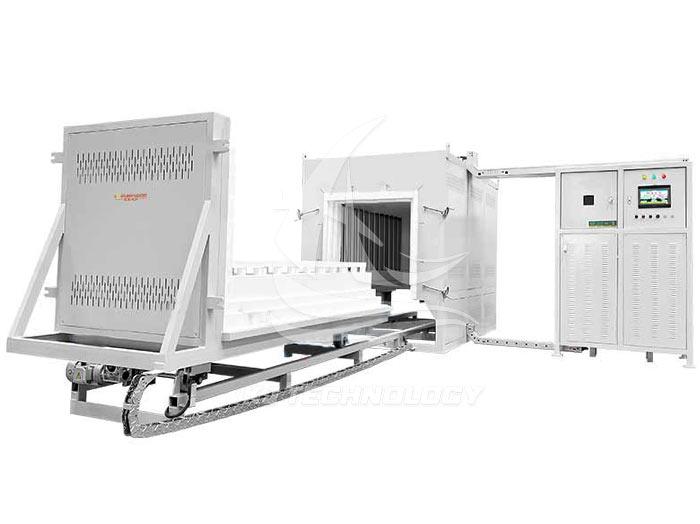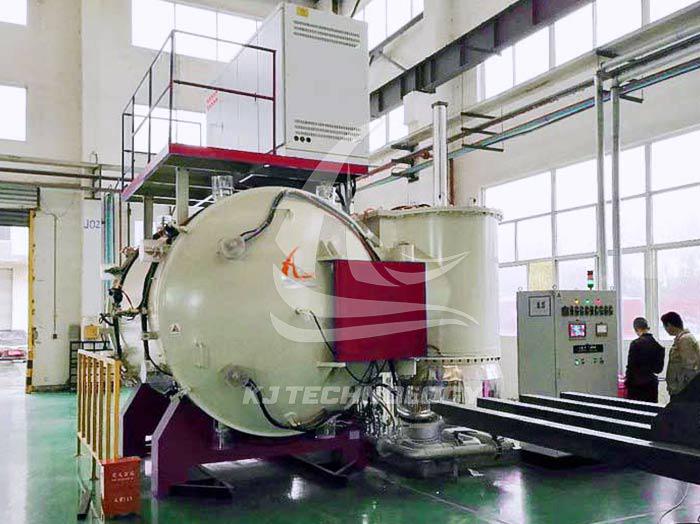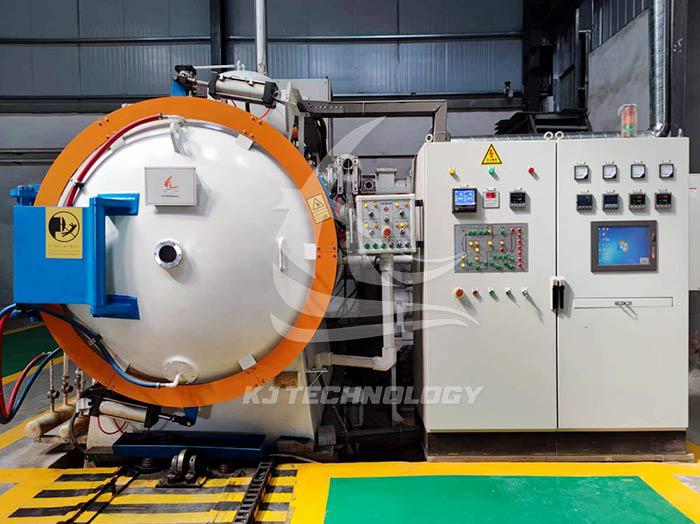Application of Vertical Graphite Vacuum Furnace in the Automotive Industry
 09-03-2025 Author: KJ technology
09-03-2025 Author: KJ technology
The vertical graphite vacuum furnace is widely and crucially used in the automotive industry, mainly reflected in core areas such as heat treatment, lightweight material processing, precision component manufacturing, and new energy battery material processing. It significantly improves the performance and production efficiency of automotive components through high-temperature vacuum environment and the unique properties of graphite materials. The following are specific application scenarios and analysis:
1. Heat treatment of automotive components: improving performance and lifespan
Vacuum quenching: The vertical graphite vacuum furnace uses precise temperature control in a vacuum environment to quench key automotive components such as stainless steel, high alloy mold steel, and high-speed tool steel. The vacuum environment avoids oxidation and decarburization phenomena, ensuring the surface smoothness of the workpiece. At the same time, uniform cooling is achieved through gas quenching (such as high-purity nitrogen) to minimize deformation. For example, after vacuum quenching, the surface hardness and wear resistance of car transmission gears are improved, and their service life is significantly extended.
Vacuum Annealing and Tempering: Annealing and tempering of automotive components in a vacuum environment can eliminate internal stress, improve microstructure, and enhance material toughness and plasticity. For example, after vacuum annealing, the fatigue resistance of car engine connecting rods is improved, making them suitable for high load operation requirements.
2. Lightweight material processing: promoting automotive lightweighting
Aluminum alloy and magnesium alloy processing: A vertical graphite vacuum furnace is used to melt and heat treat aluminum and magnesium alloys in a vacuum environment, avoiding oxidation inclusions and improving material purity and mechanical properties. For example, car wheels are made of vacuum treated aluminum alloy material, which reduces weight by more than 30% while increasing strength, meeting the needs of energy conservation and emission reduction.
Curing of carbon fiber composite materials: In a vacuum environment, graphite molds achieve uniform curing of carbon fiber composite materials through precise temperature control, avoiding bubbles and defects, and improving material strength and corrosion resistance. For example, car body coverings are made of vacuum cured carbon fiber composite materials, which reduce weight and improve impact resistance.
3. Precision component manufacturing: ensuring high precision and reliability
Vacuum brazing: A vertical graphite vacuum furnace is used to brazing precision automotive components (such as sensors, electronic controllers, etc.) in a vacuum environment, ensuring high joint quality and good repeatability. For example, after vacuum brazing, the sealing performance of automotive oxygen sensors is improved, the detection accuracy is stable, and they can adapt to harsh working conditions.
Vacuum sintering: Sintering of hard alloys (such as cutting tools and molds) in a vacuum environment to increase material density and hardness. For example, the valve seat of an automobile engine is made of vacuum sintered hard alloy material, which has improved wear resistance and is suitable for high temperature and high pressure environments.
4. New energy battery material processing: supporting electrification transformation
Purification of negative electrode material: A vertical graphite vacuum furnace is used to purify the negative electrode material (such as graphite) of lithium-ion batteries in a high-temperature vacuum environment, removing impurities and gases, and improving the material's conductivity and cycling stability. For example, graphite negative electrode materials purified by vacuum can increase battery capacity and prolong cycle life.
Positive electrode material pretreatment: Pre treat positive electrode materials (such as lithium nickel cobalt manganese oxide) in a vacuum environment to optimize their crystal structure and enhance their electrochemical performance. For example, positive electrode materials treated with vacuum can increase battery energy density and accelerate charging speed.








